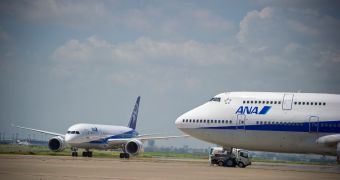As the Sun is nearing its solar maximum for this cycle – Solar Cycle 24 – it will begin to produce increasingly large amounts of radiation. These particles will bathe commercial and military aircraft, as well as spacecraft in Earth's orbit, with more radiations than normal.
What this implies is an increased risk that travelers using airlines and astronauts aboard the International Space Station (ISS) will be exposed to higher-than-normal radiation levels. This is expected to take place through 2013 and beyond.
Our parent star operates in 11-year cycles, where periods of high activity called solar maximums alternate with periods of less-intense activity, called solar minimums. At this point, we are heading for another peak, which is expected to arrive in late 2012 or 2013.
As time passes, the amount of strong solar flares or coronal mass ejections that will be released from the Sun is likely to increase, slamming large volumes of high-energy particles into Earth's protective layer, the magnetosphere.
Generally speaking, astronauts and airline passengers are generally exposed to more high-energy solar particles and cosmic rays than people living on the surface of the planet. The radiations also damage the aircraft, spacecraft or satellites themselves, Space reports.
When particle ejecta plumes caused by solar flares hit the magnetosphere, they can have a wide range of negative consequences, such as for example drying power grids, harming satellite electronics, boosting aurora displays, and interfere with critical communications systems.
According to a study conducted by experts at the University of Reading, in England, people should not avoid air travel when approaching solar maximum. The team here conducted an analysis on 9,300-years-worth of solar data, collected from ice samples stored in Antarctica and Greenland.
“However, it is good to be aware that one is exposed to more hazardous particles, particularly on trans-polar flights. For really frequent, lifelong fliers, it might become wise to be like workers in the radiation industry and have more-frequent and more in-depth health checks,” Michael Lockwood says.
“Also, to reduce exposure for passengers and crew to higher doses during solar events, flights may be diverted to lower latitudes and altitudes, with delay and cost implications – those extra costs will be reflected in ticket prices, of course,” adds the Reading expert, a coauthor of the new study.
Details of the analysis were published in the August 19 online issue of the esteemed scientific journal Geophysical Research Letters.

 14 DAY TRIAL //
14 DAY TRIAL //